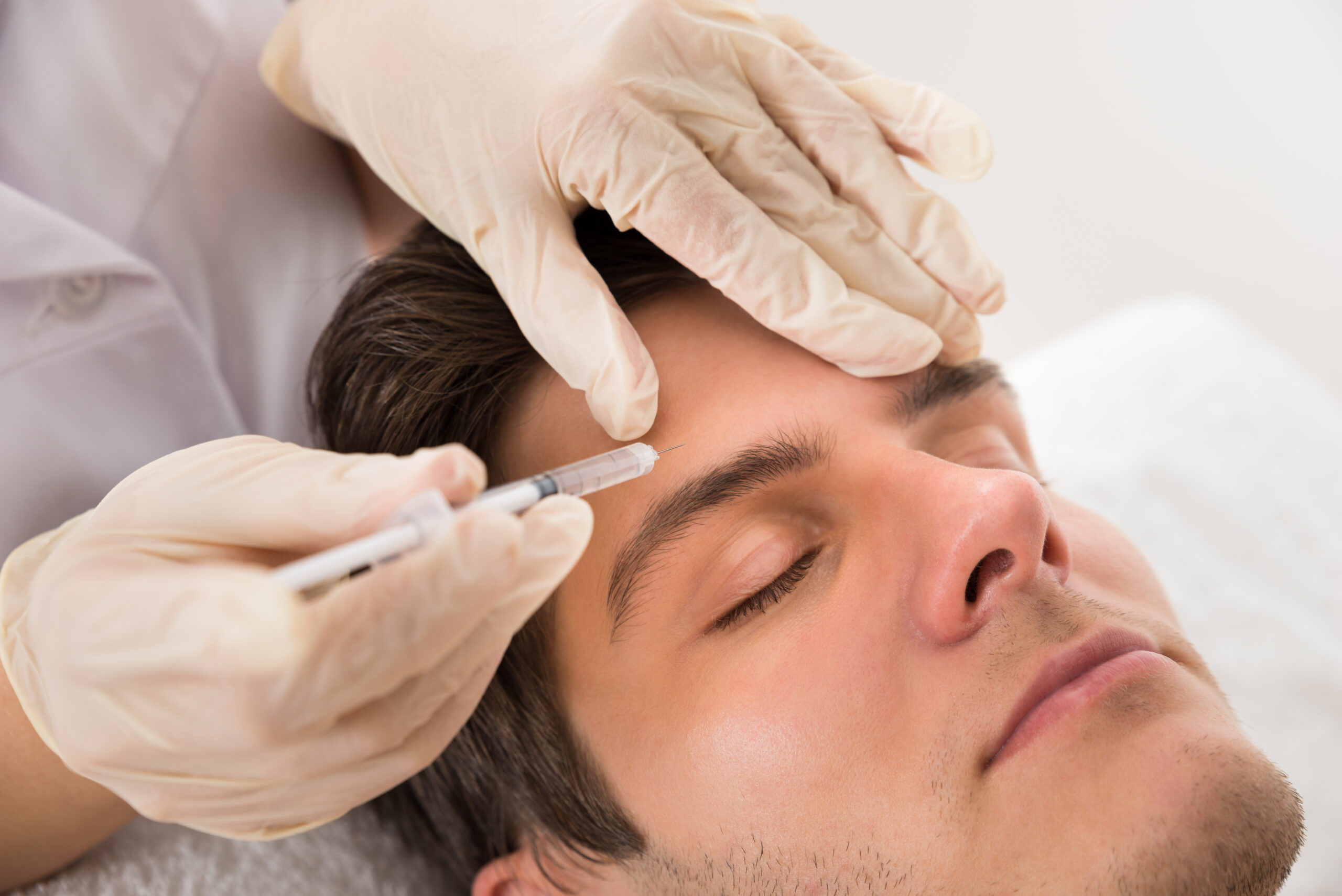
Botox is a purified neurotoxin, botulinum toxin type A, which is derived from the bacterium Clostridium botulinum. It is commonly known as a cosmetic treatment used to reduce the appearance of wrinkles and fine lines by temporarily relaxing or paralyzing facial muscles. There are multiple brands of neuromodulating botulinum toxin, and in our practice, we routinely use Botox® and Dysport®.
When botox is injected into specific muscles, it blocks the nerve signals responsible for muscle contractions. This leads to a temporary reduction in muscle activity, resulting in the smoothing of wrinkles and preventing the formation of new lines. It is frequently used to target forehead lines, crow’s feet, frown lines, and other facial wrinkles.
Apart from its cosmetic applications, botox also has medical uses. Regulatory authorities have approved it for the treatment of various muscle and nerve disorders. These include:
- Chronic migraines
- Teeth grinding
- Cervical dystonia, which causes muscle contractions in the neck and shoulders
- Blepharospasm (involuntary eyelid twitching)
- Hyperhidrosis (excessive sweating)
How is Botox Injected?
Botox treatments are quick and done in our procedure rooms. First, we’ll discuss your treatment goals and anatomy. Then we’ll apply numbing cream or ice pack, if needed, to numb the area before the treatment. Botox injections are usually well-tolerated, with minimal and temporary discomfort. We use a very fine needle to inject small amounts of botox into specific muscles in the face based on your aesthetic goals.
When Will I Notice the Results After My Injections?
The effects of botox become noticeable within a few days after the injection, and the results usually last for 3-6 months. However, as the muscles regain their normal activity over time, the effects gradually diminish. To maintain the desired results, repeat injections are necessary.
Risks Associated with Botox
Like any medical procedure, botox injections carry potential risks and side effects. Common side effects include temporary bruising, swelling, or redness at the injection site. In rare cases, more severe complications may arise, such as muscle weakness, drooping eyelids, or difficulty swallowing or breathing.
What is a Unit of Botox?
A unit of botox is a standardized unit of measurement to ensure consistency in dosing. However, the conversion of botox units to volume or mass is not straightforward since it depends on the dilution of the botox solution. Different neurotoxin products – Botox Cosmetic®, Dysport®, Xeomin®, Jeuveau®, and Daxxify® – may use different units of measurement. Individual patients may respond differently to different brands of botox, as they are all slightly unique formulas.
How Much Does A Unit of Botox Cost?
Based on where you live, the price of botox treatments can vary. Botox typically comes in 50 – 100 unit vials. Each unit ranges in price from $12 to $20 per unit. The number of units used in a treatment can vary depending on the specific area being treated, muscle strength, and each patient’s response. In our office, we charge by the area treated, with costs decreasing as the number of areas increases.
Will I Need More Botox Over Time?
The need for additional botox injections in subsequent treatments can vary depending on several factors, including individual response, desired aesthetic outcomes, and how long previous treatments last. Some patients come regularly every few months, while others touch up areas once a year.
Botox is not a permanent solution. Over time, the muscles gradually regain their activity, and wrinkles may reappear. Typically, the results of botox injections last for several months before gradually wearing off. To maintain the desired results, repeat injections are usually necessary. The timing of follow-up treatments varies by patient.
How Many Units of Botox Do I Need Per Facial Area?
- Botox for Forehead Lines: Horizontal fine lines, grooves, and wrinkles across the forehead typically require around 10-30 units of botox.
- Botox for Crow’s Feet: Lines stemming from the outer corners of the eyes usually require 5-15 units per side.
- Botox for Frown Lines: Vertical grooves between the eyebrows – also called glabellar lines or 11s – commonly require around 20-30 units.
- Botox Brow Lift: We can achieve a subtle brow lift by deactivating the muscles that pull the edges of the brow down. We usually inject 5-10 units of botox on each side.
- Botox for Bunny Lines: Lines on the sides of the upper nose, just under the bridge, usually require 5-10 units of botox.
- Masseter Botox: We usually inject 20-30 units of botox into the masseters.
- Botox for Lipstick Lines / Smokers Lines: Just 2-6 units of botox are injected above the upper lip to soften those lines.
- Lip Flip Botox: The botox lip flip requires 4-8 units injected above the upper lip and near the corners of the mouth. By relaxing the orbicularis oris muscles, the upper lip appears larger and more defined,
- Botox for Neck Platysmal Bands: The average range of Botox units used for platysmal band treatment can vary from 25 to 75 units or more, depending on factors such as the size and number of bands and the strength of the neck muscles.
Prevent and Reverse Signs of Aging Today With A Non-Invasive Botox Treatment
Our board-certified plastic surgeons would love to bring you in for a consultation to talk about treatment options and your aesthetic goals.
Medical Review: This procedural information has been medically reviewed by plastic and reconstructive surgeon, Brian A. Cripe, M.D.




